JULIA BENZ: Reflecting (on) painting
“The finished canvas […] is the match won. But it does not mean that you stop. After all, a basketball player doesn’t stop after a game he has won, it’s all about the league, isn’t it?”
–Julia Benz
Just let it happen
“Many things cannot be planned at all. It would be such a pity if you planned everything instead of just letting it happen and look ‘Oh, what is there’? Not having to control everything while I’m painting gives me the freedom to react to what’s happening”, says Julia Benz. Looking at her work, it quickly becomes clear that she remains true to this credo of ‘just let it happen’. Trained at the Academy of Arts in Düsseldorf and the University of Arts in Berlin, her works were initially partly figurative, while large colour fields – in an interplay of figuration and abstraction – fill the background. Today, however, the artist works abstract. Since the end of 2017 she has completely dispensed with figurative painting. Instead, the colours have emancipated themselves as independent actors – just like she herself. “When I started studying painting in Düsseldorf, everything around me was figurative. A must, I thought. But my strength has always been abstraction. It took me years to get out of it. But on the other hand, I wouldn’t want to miss that time either. It was always very important for me to know that I could paint everything, so that I could then decide for myself what I wanted to paint”, says the artist.
The struggle between shapes, colours and speeds
Yet colours are what make her work special: young, colourful, dynamic, courageous and bold. But it is not about colours alone, rather the colours are in a permanent exchange and tension with the picture-inherent forms. “The one would not be enough without the other or would not be equally strong. It is precisely the clash and the struggle between forms and colours, between the contrasts and the different radius in the movements and speeds that is really interesting for me”, says the artist. Thus, the factor of time also plays an essential role in her works, and this on several levels. While the gestural forms and brushstrokes are very fast, the clear straight form – “actually the most boring part of the picture” – takes the longest. And these different speeds, the slow, the fast, the planned and the gestural spontaneity or even the mistakes that can happen, this interaction is what characterises painting for Julia Benz – “that is what is alive in the works for me or what is annoying or creates depth.” The artist explains: “If you want to paint a snowy landscape, for example, it is not just a matter of painting a white canvas. It is also about painting everything that lies under the snow, everything that is hidden. After all, this is the carrier of the snow, it gives the snow its structure.” And she continues: “I can say something, but the question is, how do I say it? What is behind it? And that, I think, is actually the interesting thing.”
Julia Benz, Notion II, 2018, acrylic, oil and aerosol on canvas, 80x60cm ©Julia Benz Julia Benz, Sweet and Sweaty, 2019, Acryl, Ink and Aerosol on Canvas, 160 x 120 cm ©Julia Benz Julia Benz, Count to Ten II, 2019 Acryl, Ink and Aerosol on Canvas, 160 x 120 cm ©Julia Benz Julia Benz, Notion I, 2018, acrylic, ink and aerosol on canvas, 80x60cm ©Julia Benz
The dispute with the canvas is essential
Thus the work process is permanently present in the painting. It is an elementary part of the work – sometimes it is obvious, sometimes it can only be guessed at. It is always a negotiation process between intuition and conscious control, chaos and order, action and reaction. “In the beginning, when I stand in front of the white canvas, I play around, have fun, pour paint and do all kinds of things. Unbiased. Playful. Free. Maybe I have a colour concept, but I work intuitively”, says the artist. At a certain point, however, the head comes into play. And the planning. The steering. And the decision. “Most of the time I’m faced with a huge colour chaos and I look ‘Okay, where are we both going?’ This is the moment of decision. Maybe the canvas already tells me in which direction to go. But not always. Sometimes the way is easy, sometimes very complicated. But this process is always the most important thing for me: the dispute with the canvas.” The term “dispute” already suggests that it is not always a pleasant matter. Not always pleasant, but necessary. “Sometimes I stand in the studio and think ‘Oh, it’s so hard. I’ve been doing this for a few years now, but it’s never easy to do a painting’.” But this challenge can also be seen as a motor. As a motor and an incentive to take up the challenge and ultimately overcome it. “The finished canvas is salvation. So this is the match won. But it does not mean that you stop. After all, a basketball player doesn’t stop after a game he has won, it’s all about the league, isn’t it?”, laughs the artist. Ambitious words of an ambitious but nevertheless modest artist who lives painting. Courageous. And curious at the same time. But once Julia Benz has made a decision, she notices quite quickly when a painting is finished. “At some point almost everything has been said in essence and then it’s just a question of ‘how far do I want to underline it or to what extent is it actually enough?’ And often it’s like this: if I think I could do something there again or there – but it wouldn’t change anything in essence – then I can stop. Then it is finished, then everything is said.”
Feel the painting
Nevertheless, apart from the colour theme, her works do not per se have a specific content or statement – “even if we humans like it if things are always given to us. But that is not my intention at all”, replies the artist. Rather, Julia Benz consciously leaves room for the recipient’s own thoughts, feelings and associations. And she adds: “For me personally, it is like this: I can feel what I see. I react physically to what I paint. And if it’s just banal things like ‘this is so beautiful, it makes me happy or it bothers me’. But in the end everything dissolves into harmony or order for me. So the chaos I create for myself I clean up when I paint.” And it is in this context that music comes into play. Because music plays a central role for Julia Benz. It is the motor, catalyst of feelings and at the same time a mood-setter. Thus, a studio day without music is unthinkable for the artist, it actively guides the work process and helps her to lose herself completely in painting. Her playlist, which runs all day long, is humorously called “Benzi’s Best” and may be an explanation why her works are often named after song titles.
When there is no need to do it
The best moments are those when the hands, eyes and mind switch to autopilot and work almost by themselves. But it can take several hours to get there. “So when I know I have something to do at four o’clock in the afternoon, then sometimes I don’t even need to go to the studio, because I know I don’t have enough freedom in terms of time. Sometimes it takes hours. The good moments usually start at 16h, 17h or 18h in the evening. So I do things before that, but the really good stuff happens after six hours, when the need to do them dissappears. Maybe when you’re a little too tired to think too much”, says Julia Benz. So the desirable state for her is the one where she no longer sticks strictly to concepts and ideas, but lets herself be guided by her intuition. And also consciously accepts mistakes, impassability or chance.
A question of size
Julia Benz’ common working materials include acrylic paints, coloured ink and acrylic spray can, but the respective carrier media vary greatly. Thus her artistic spectrum ranges from works on paper to canvases, 3-dimensional installations and large-scale wall paintings, so-called murals. The latter she has already left behind all over the world in the context of various programmes and cooperations – among others, the “Yalla Khartoum” realised in Sudan or the “Festival Concreto” in Fortaleza, Brazil; both in cooperation with the Goethe Institute. What attracts her to murals is above all one thing: the format. “First of all, I am a painter – whether I do it on a wall, on a canvas or on paper, it doesn’t really matter. [But of course, in a certain way] I am also living a kind of hybrid existence. On the one hand, in the street art or urban art scene, I am considered the painter who studied art. I am an outsider there, but I also have my unique selling point. And in the classical art scene I am an outsider, because I do urban art or street art or paint walls. It is both a curse and a blessing not to really belong anywhere properly. On the other hand, I also enjoy the fact that I can’t be properly assigned and that I can allow myself almost anything. So I can paint everywhere.” It becomes interesting for her, above all, when the whole body is used for painting. When not only the wrist or forearm is used to draw a line, but the whole body. “I love large formats and especially this physical aspect, when it really becomes a feat! I really like that a lot. I would like to paint much more in large format”, the artist remarks.
Antonym dimension: The breaking of space and dimensions
With her preference for large formats in mind, it may be a natural step and a logical development that the artist has been experimenting with a further dimension for several years, constantly facing new challenges: What is meant are 3-dimensional installations. “So the break in painting was a theme for me early on, that is, to perceive painting differently, to play with it. Not only that a painting can suck you in or repel you, but to feel painting.” The current series of works “Antonymdimension” is intended to do just that: play with perception, break dimensions, question (visual) levels. “I feel challenged when composing in several dimensions. When it becomes bigger than I am and I have no idea at the beginning how I am going to do it at all, then I am into it. Simple is kind of stupid.” At the same time, the series of works is about turning one’s back on the two-dimensionality of painting and the normative pictorial levels associated with it, and looking where the path can still lead. You get an idea of this when you visit the new design hotel “Urban Loft” in Cologne, for which she designed a site-specific window installation. The installation consists of five geometric Plexiglass panels painted on both sides, which take the viewer on a journey into the world of colours and turn both the interior and exterior in a colourful light. The panels are supported by geometric shapes made of colourful dichroic film, which are attached to the window panes. Depending on the lighting conditions, the observer’s point of view and the movement of the Plexiglas panels, the sensory and work impression varies. Reflections, cast shadows, viewers, passers-by, interior and exterior space – everything becomes an integral part of the work without being able to control it deliberately. And this is exactly what makes this work so attractive. “For me, ‘antonym dimension’ means a multi-dimension. What is really exciting for me is that you connect inside and outside through the reflection and that painting mixes with what happens outside. When people pass by, they become part of this work”, says Julia Benz. And this may be a logical consequence of previous considerations and efforts. In a way, the window installation can be seen as a link and artistic parenthesis between her outdoor murals and the indoor paintings. Nevertheless, she goes one step further with her work series, as she leaves the square format – another step towards artistic emancipation. It is interesting to note that an offshoot of this liberation movement can now also be found in her canvas works. Through the practice of so-called “white-painting” she deprives the canvas of its square shape and selectively breaks up certain areas of the painting. Erases them. “When these works hang in front of the white wall, the white mixes with the white of the wall and then only the painting counts.”
It will be interesting to see where and in what dimension the pulsating colour world of Julia Benz will progress the coming years. Which medium she will use and in which formal language she will address us. Friendly, but nevertheless impulsive and demanding. But one thing is quite certain: the artist will not be satisfied with winning a few games – after all, it’s all about the league.
Julia Benz’ works are currently on display at the “Urban Loft Cologne” (01.10.2020 – 31.01.2021) and at the “Fousion Gallery” in Barcelona (01.10. – 20.11.2010). The exhibition project “Sudan Moves”, in which she is also involved, will start in November 2020.
724 views
Categories
Tags:
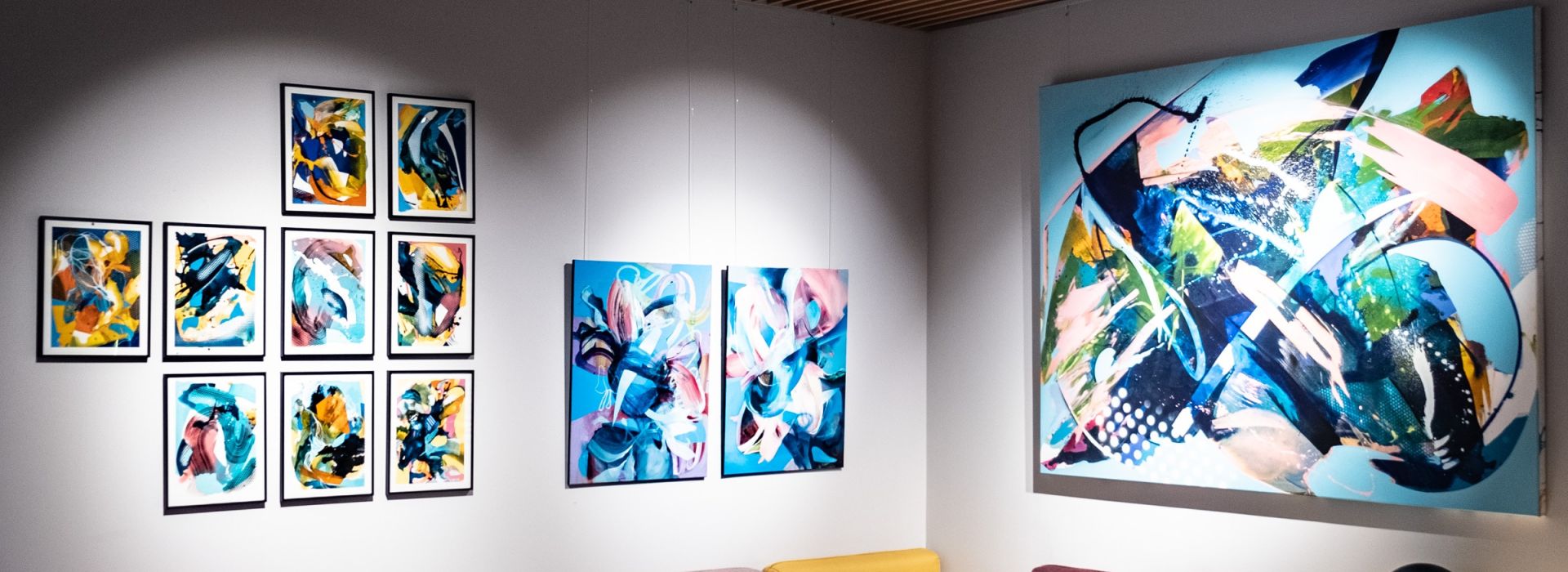
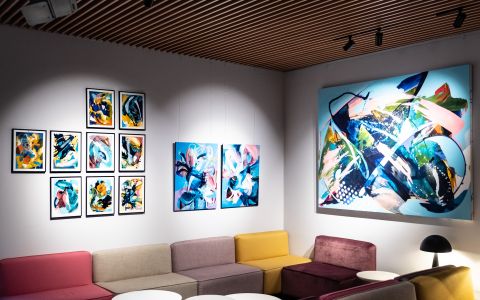
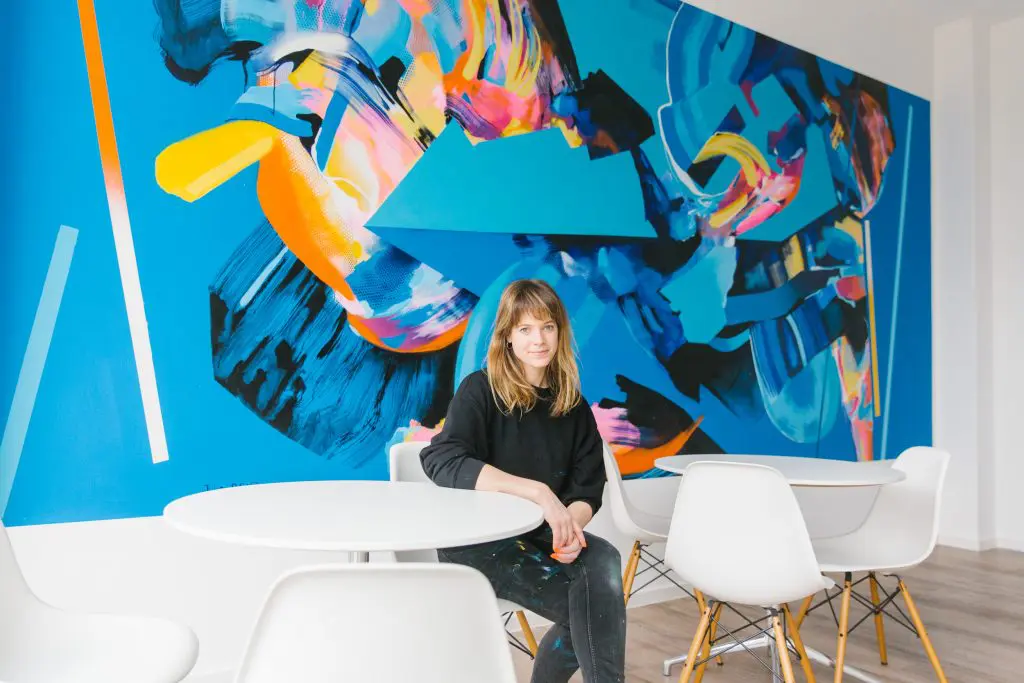
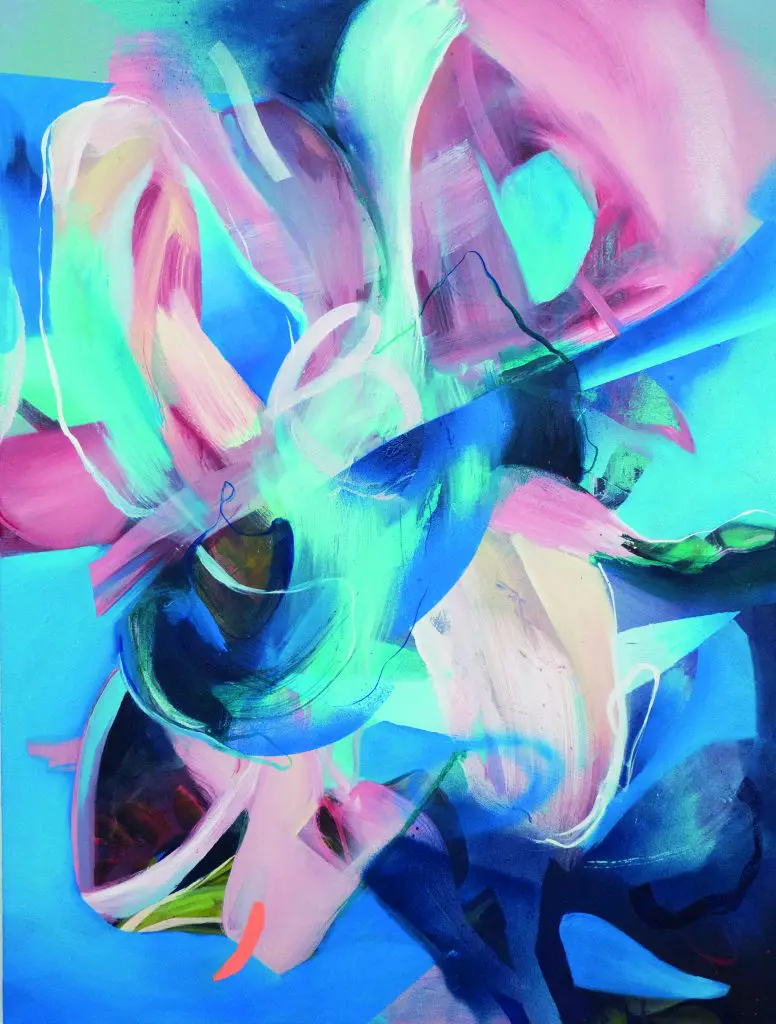
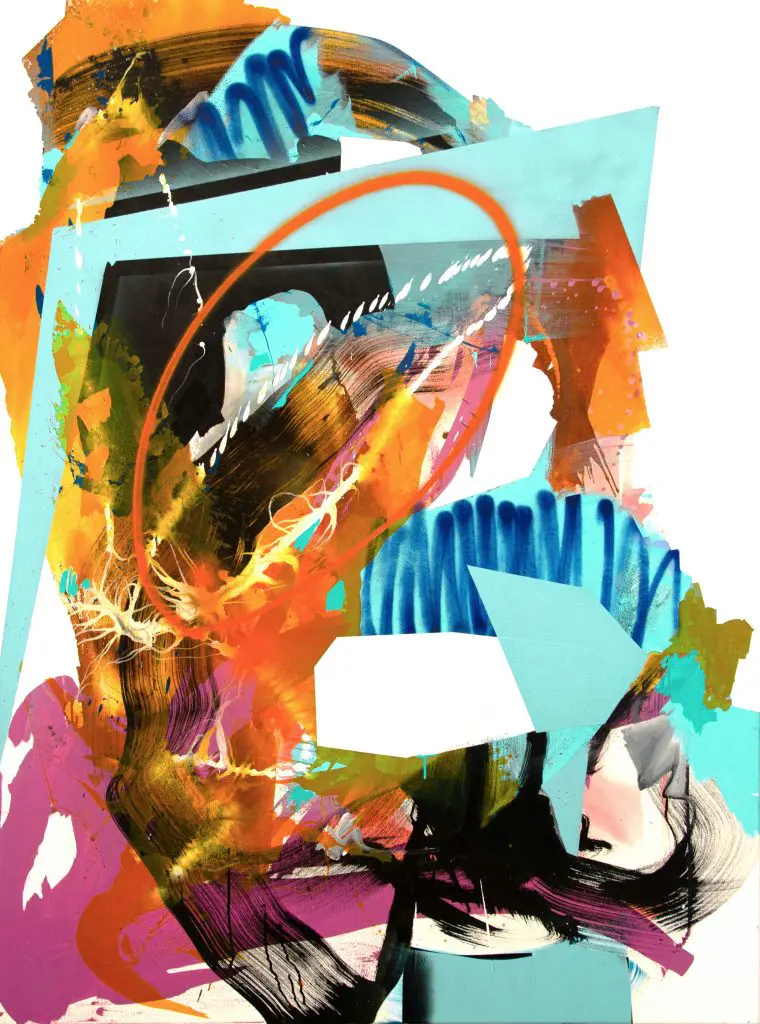
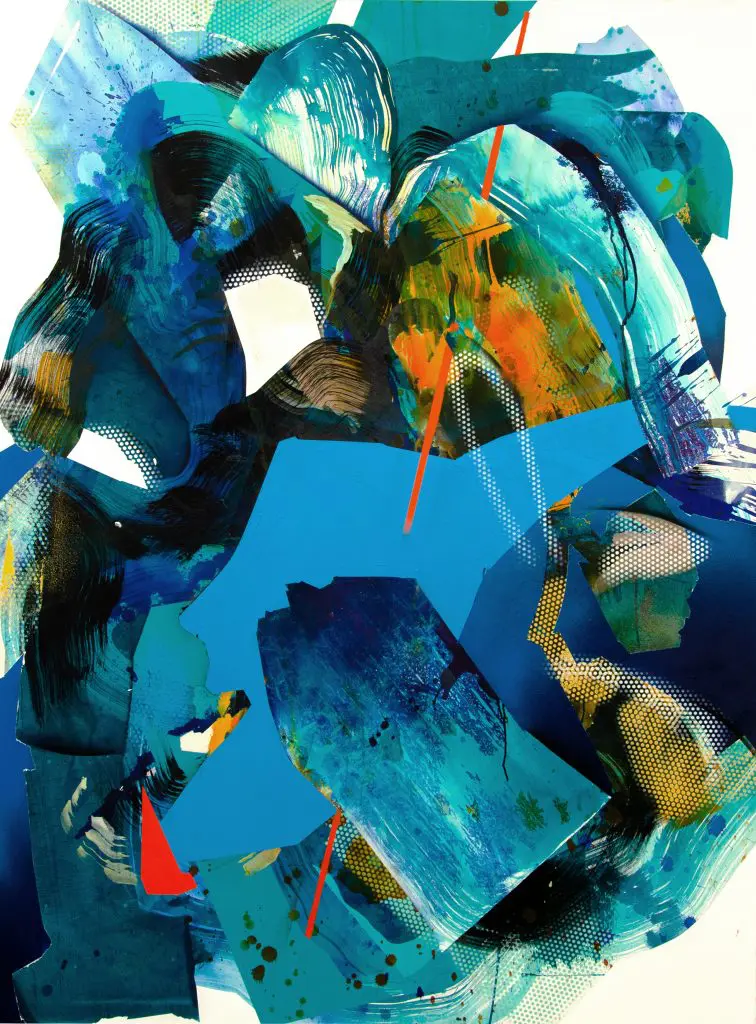
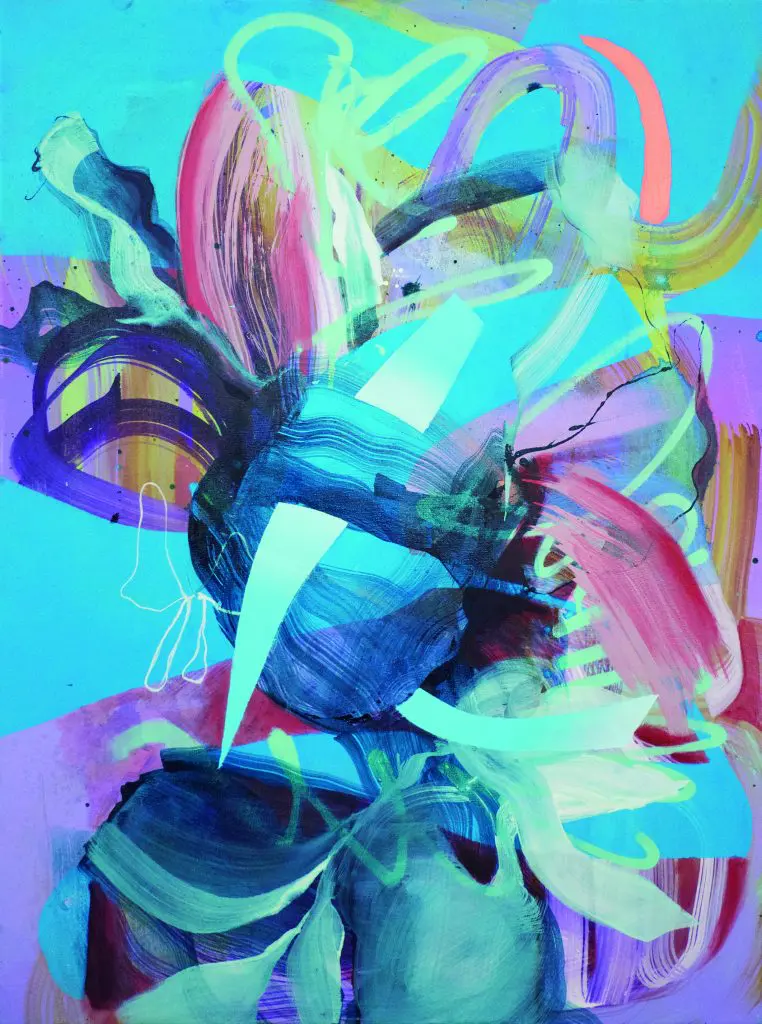
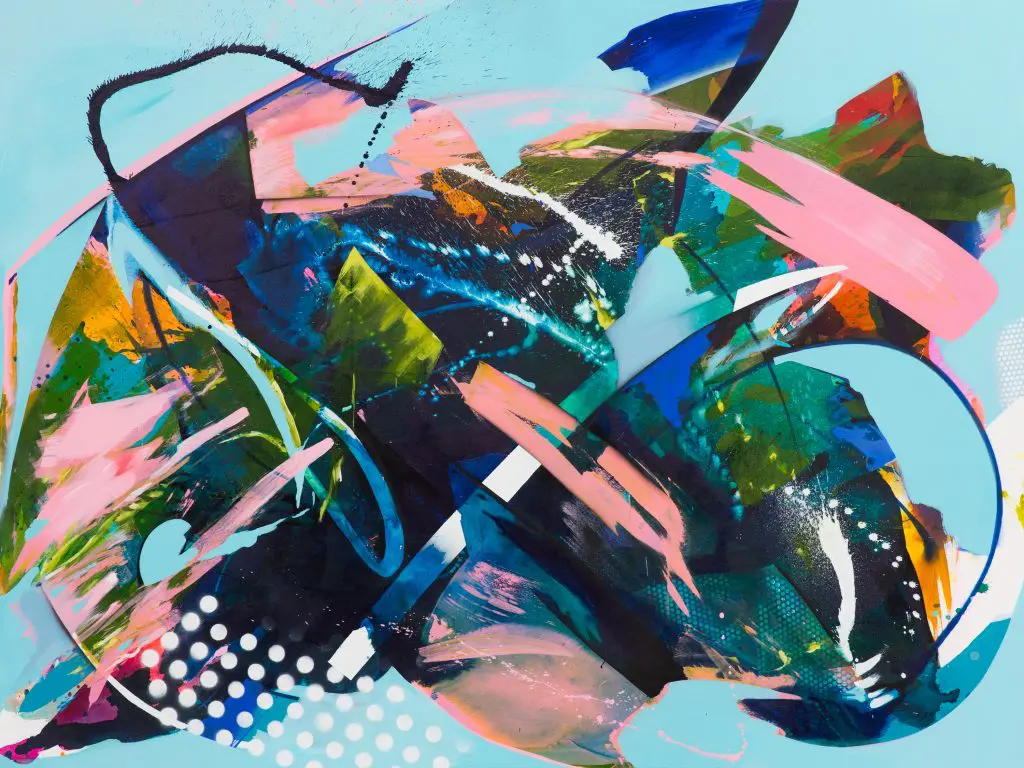
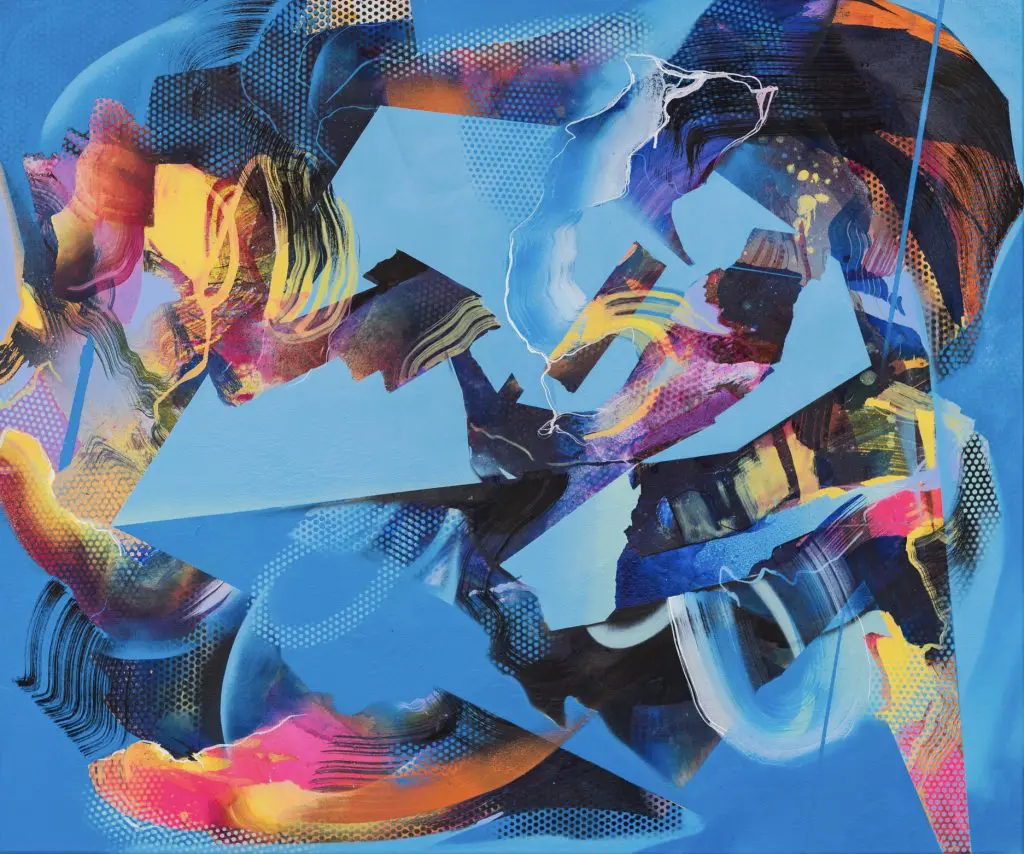
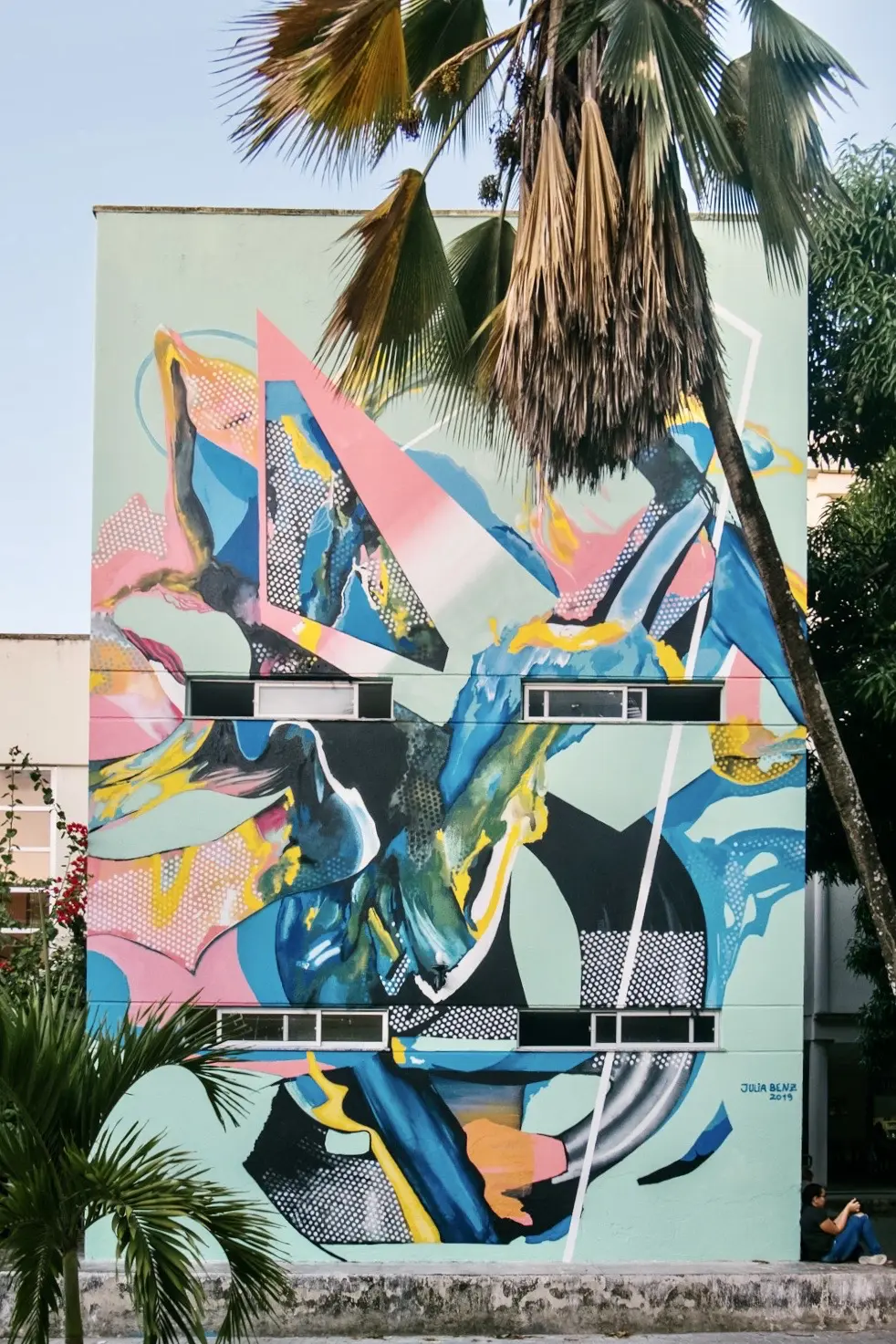
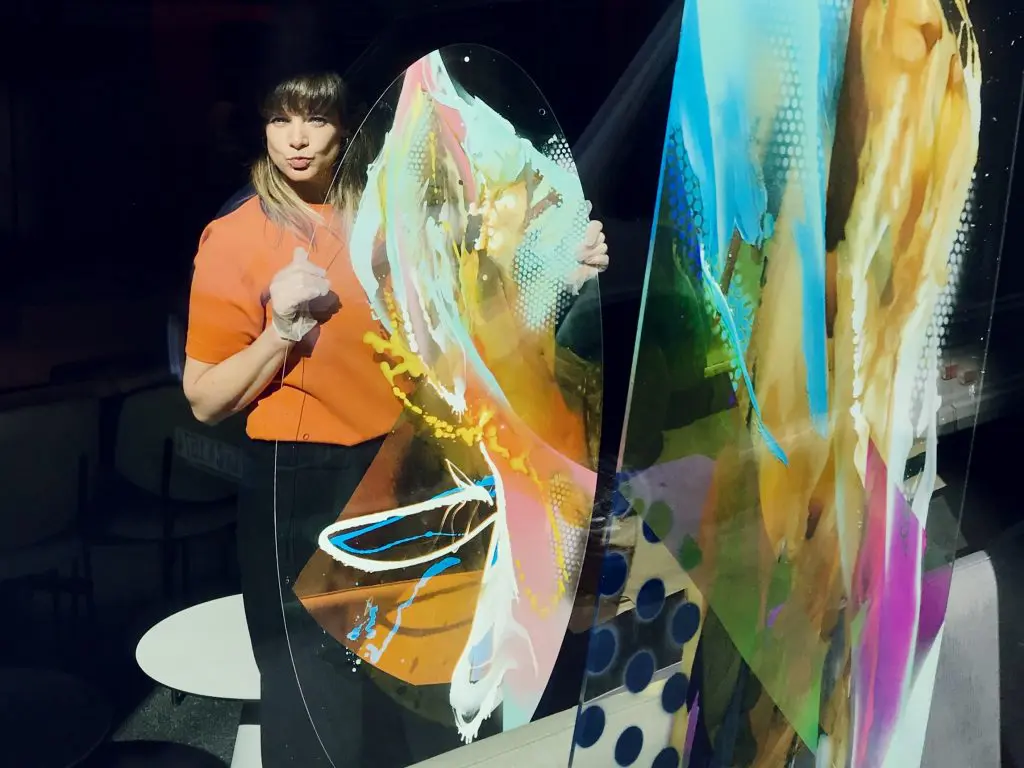
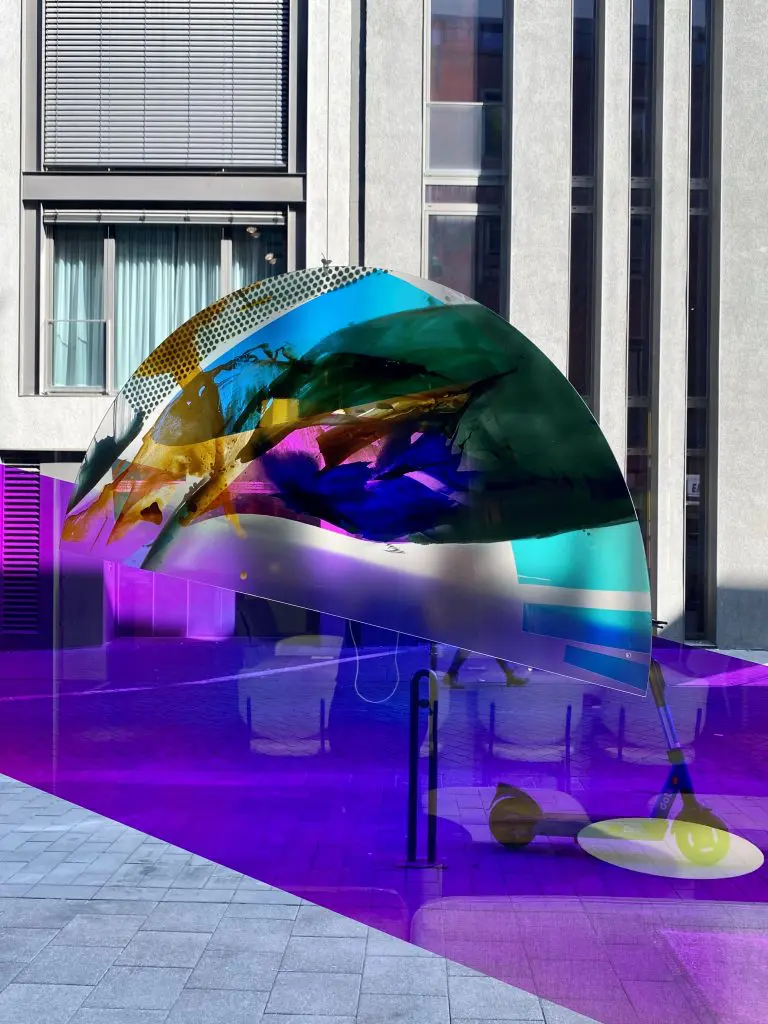
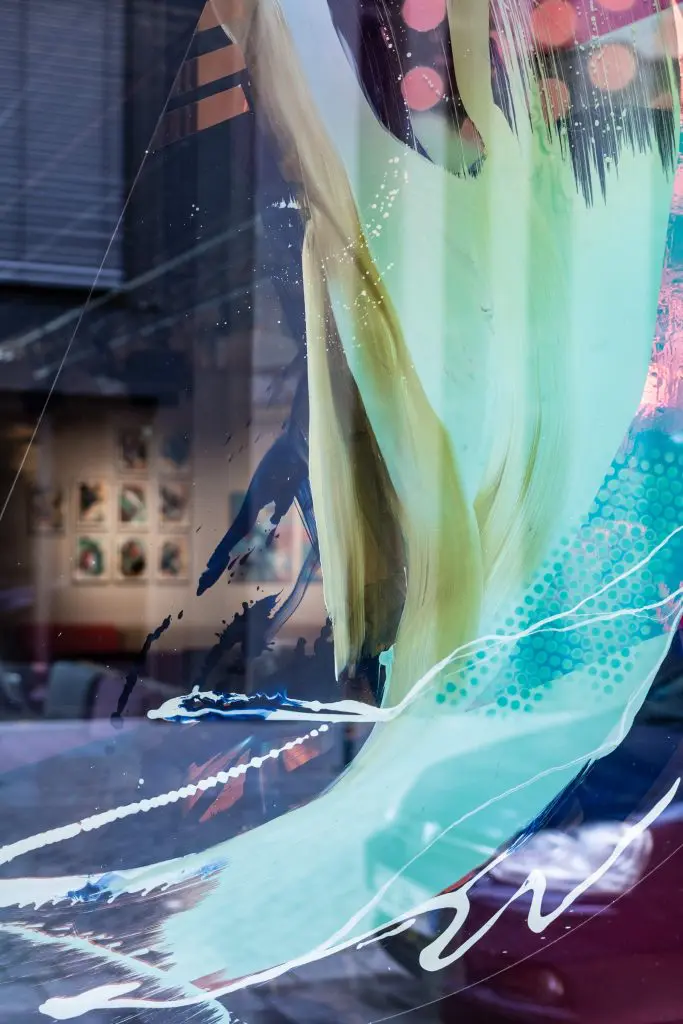
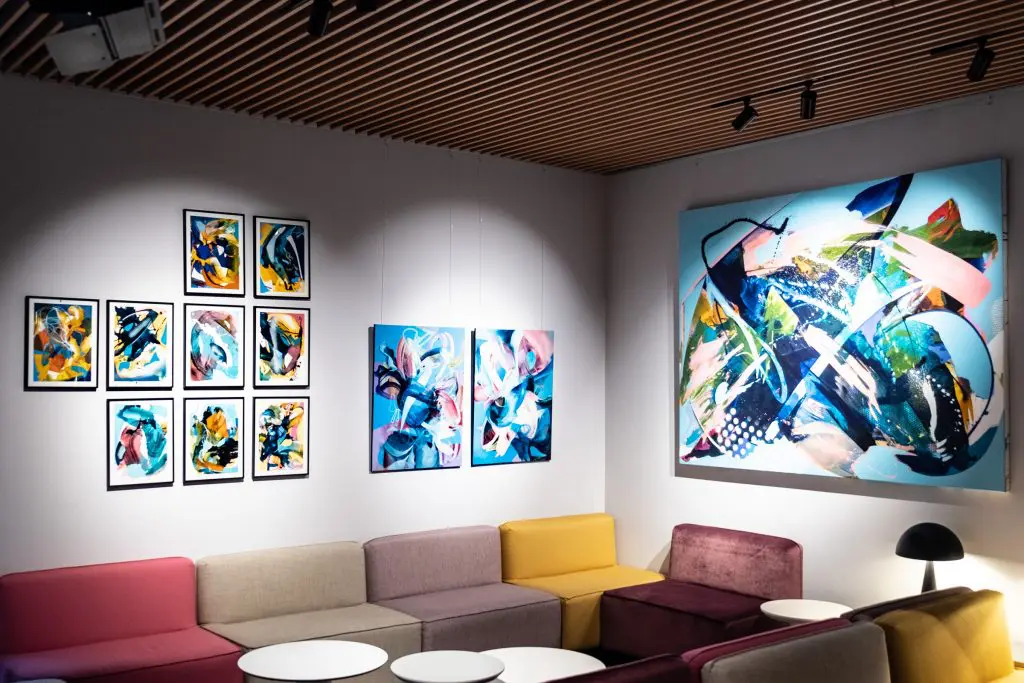
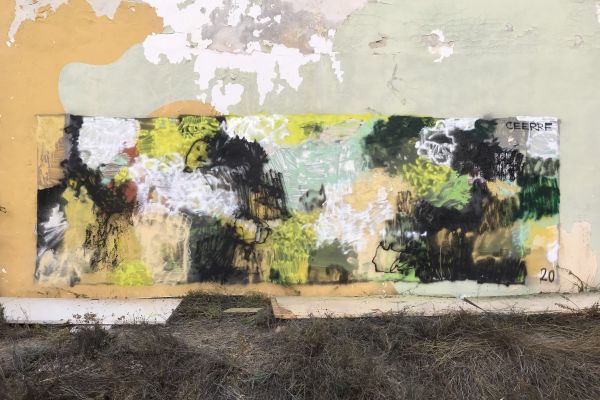
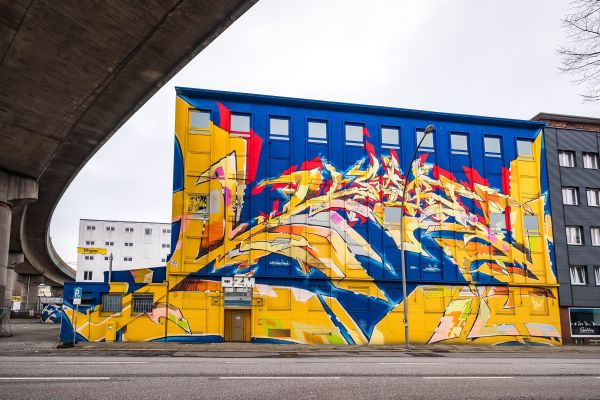
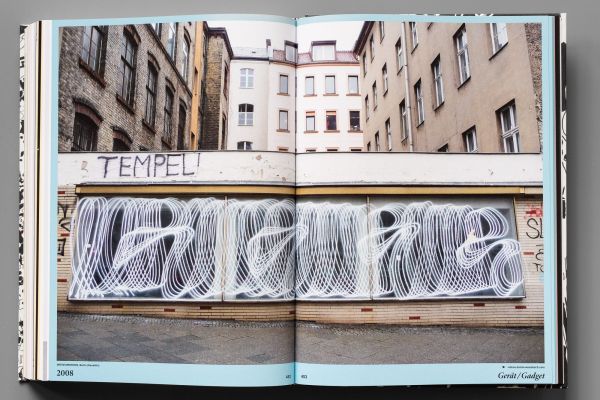
Leave a Reply